Few-Flowered Garlic
An invasive wild onion from Asia, this plant produces small garlic like bulbils at the base of the short, thin, flower stem.
| Hedgerow Type | |
| Common Names | Few-Flowered Garlic, Few-Flowered Leek |
| Scientific Name | Allium paradoxum |
| Season Start | Mar |
| Season End | Jul |
Leaves
Long, thin and green with a furrow running the length of the leaf on top and a ridge underneath. The underside is shown in the adjacent photo.
Flowers
A small, delicate, white petaled flower which can have slight markings on the petals but mainly seen as plain. There is normally only one or not many flowers per plant, hence the common name.
Fruit
After the flowers wilt they leave behind small, garlic like bulbils that can be treated as such although they are not quite as strong in taste as garlic.
Habitat
As an invasive fast spreading alien plant Few-Flowered Garlic can occur in many environments, hedgerows, woodland edges and clearings, flowerbeds, parks and verges.
Possible Confusion
Can be confused with Three-Cornered Leek, pictured, but the flowers on Three-Cornered Leek have green markings and don’t develop bulbils.
Could be mistaken for young Daffodils but the smell of garlic should help avoid confusion.
Smell
Like garlic.
Taste
A cross between onion, chives and garlic.
Frequency
Not overly common but can be found in large quantities when it has escaped.
Collecting
The leaves, flowers and bulbils are the edible parts of this plant.
Other Facts
Few-Flowered Garlic is listed on schedule 9 of the Wildlife and Countryside act and as such it is illegal to plant or help spread this plant in the countryside.



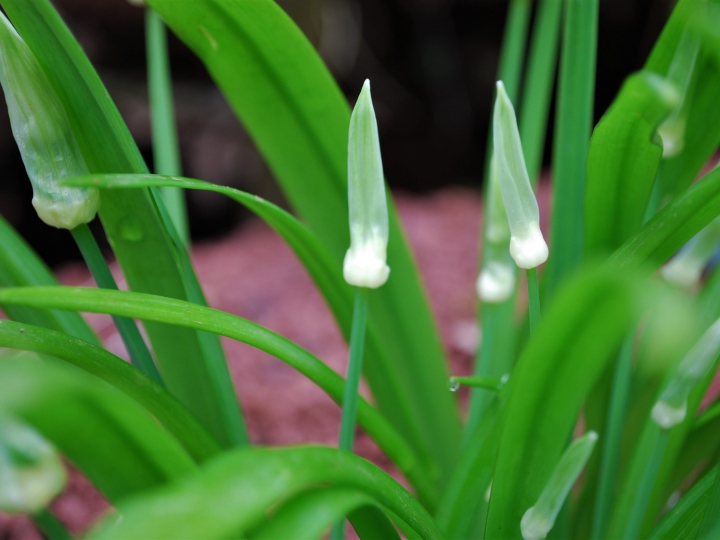
















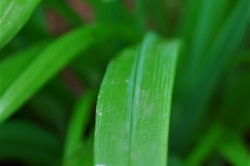
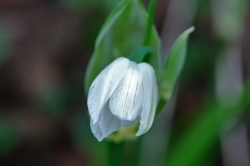
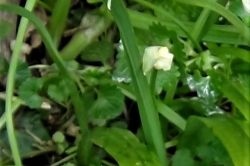
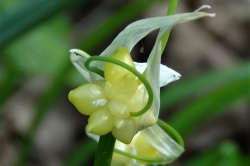
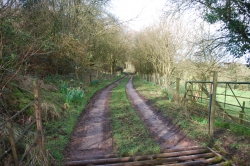
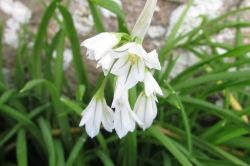





27 comments for Few-Flowered Garlic
Hello, We have moved into our new house and have discovered we have Few-Flowered Garlic how do you recommend we remove this.
Thanks
simply uproot it before it goes to seed.
Hi I want to plant few flowered garlic in my garden. How to find the seeds and where or do you have please let me know thanks
It is a Schedule 9 plant in England and Schedule 14 in Scotland. It is illegal to plant it or allow it to spread into the wild
Have this in my garden. Was there when we moved in . Trying to get rid of it but can easily grow through landscape fabric. Not good. Certainly very invasive.
What is the best way to get rid of few flowered garlic which has arrived in my snowdrop bank
Hi Morag, it can be quite hard to get rid of as it is an invasive plant but if you keep pulling it up and eating or composting it, it will soon die back.
I agree — very invasive. It has arrived amongst my snowdrops — grrr! Have been trying to pull it all out — stem, leaves, flower plus its little bulblets, and the ground bulb, easiest while the ground is damp. Fear I will be doing this for years, because bulblets easily fall to the ground.
Would welcome any advice.
It is hard to get rid of but if you keep weeding and eating your way through it you should be able to keep it under control 😉
Makes a really delicious pesto
Don’t try to destroy it! You will fail. Instead, cut the leaves (with scissors) or pull them up and cook them like spinach, mix with some ground pine nuts or any other nuts (hazel nuts give an extra flavour). Liquidise and you will have a wonderfully green pesto or, in larger quantities, a vegetable at a time of year when greens are in short supply. If you make enough you can fill your freezer with it.
Does anyone know if it spreads by the seed from the little white flower or the bulb at the bottom of the stem?
Another question . If you dig the plant up and then put it all in the compost, will the heat of the compost pile stop the seeds or bulbs growing again when you spread the compost? Will the heat be enough?
I am becoming paranoid because this year its appearing everywhere.
Few flowered garlic grows from the little bulbils coming from the flower. I don’t know if the heat of compost will kill the bulbs. It is in schedule 9 of the wildlife and countryside act as it is so invasive.
Definitely don’t put it on the compost. It is a nightmare but I’ve found that hand weeding, BEFORE the flowers seed, is the most effective. Laborious but now is a good time when we are confined to our gardens anyway.
Don’t compost it!! Honestly, home compost heaps don’t get up to a temperature to kill it. Eat what you can, bin the rest.
Hi,
I just discovered this in my garden and want to use it in place of garlic.
Can I use all of the plant?
Susan
The whole plant is edible and can be used as a garlic replacement in most dishes.
I think you’ll find the stem of A. paradoxum is four-sided rather than triangular.
Apologies! I’ve just picked half a dozen stems and they’re all triangular. The one I picked this morning must have been an anomaly – like a four-leaf clover. It definitely had 4 sides. I hope it was lucky.
Where did it come from? It’s suddenly appeared in my garden. Been here for 45 years and never seen it till 2 years ago.
I like to keep a semi wild garden but this is one plant I don’t want in it as it is so invasive and difficult to spot amongst other foliage.
But how did it get here in the first place? Was it ants spreading the bulbils like they do with cyclamen???
It produces many seeds per plant which are spread by birds and the bulbils shear off if you try to dig up the plant, both seeds and bulbils stay viable for several years. The bulbils vary in size but small ones could easily be spread by ants or other insects.
I have lived with this pest in my garden for 20 years and will never get rid of it as my garden is adjacent to council owned land which is full of it. Here’s my tips :
– wait until the soil is crumbly in order to dig up/hand weed the bulbils but before the flowers have set seed (this is very hard to do if you have clay soil)
– if you have a lot of the garlic then it is best to treat like a wild fire, it may be counter intuitive but you are best to tackle the single outliers than the massive clumps, that way it stops the spread in the garden
– tackle any garlic near the lawn as once it gets into the grass you have lost the battle
– lastly, if you have run out of time and the garlic has set seed then you must try and carefully snip and catch all the tiny bulbils or hand pull and grasp the bulbils and immediately put into a container without any holes (so not a flower pot)
– dispose of in general refuse or council recycling
– if moving plants around the garden or passing onto friends/family ask them to keep an eye out the following Spring for the tell tale bright green single leaves
Its a great groundcover, fresh green colour, low height and keeps the weeds/nettles away. It looks pretty in spring and you can eat it!
Enjoy and make the most of it.
I would never introduce it to anywhere in the UK but if it is there already, make the most of it.
I have this. it spreads really fast. Each flower produces numerous small bulbils and the bulb in the ground also produces offsets. it chokes out other spring flowing bulbs. it’s very hard to get rid of when it’s amongst other plants, as the bulbs grow amongst the roots and won’t come up when you pull and digging disturbs the roots of your other plants just when they’re getting going in spring. I’m in year two of my battle with this plant and expect it to take years to get out under control. agree with Julie R about how to get rid, get it before it flowers, be really careful to remove the flower and leaves of any plants you can’t dig up for whatever reason to try to slow down the spread, and be very careful of the small green bulbils. I can’t believe the thousands I removed this year when I thought I had done a thorough job last year! don’t plant it if you don’t already have it, you’ll regret it!
I definitely have three cornered leek and bulbil like swellings develop in the flowers once fertilized . the flower head becomes heavy and bends down to the soil where the petals wither leaving a bulbil type seed . often 10 per flower head ☹️
i have this too and agree it is a long term battle. it was in our front garden when we moved here, I did not realise what it was the first year and did not tackle it, but I can now see it spreads exponentially. each flower has at least 3 bulbils, sometimes mine put up a second flower above the first, and this will have more, so can be many more, up to 10. So 1 plant this year can be 10 next year and so on. They love my sandy soil. They also have offsets at the root so that is even more plants, sometimes I remove a bulb and it has four or five tiny new ones attached. I have made good progress but it needs tackling every year. The RHS told me that it can take 6 years for a plant to grow from the bulb so I can imagine it will be something I am always digging out of the soil. My advice – don’t plant much til you are happy you have eradicated, the most difficult area is around shrubs where its amongst the roots, or trees, so you cannot get to the bulbs. If you plant spring bulbs you will be disturbing them when you remove it. I now focus on annuals, like cosmos, and Dahlia which I dig up anyway in the Autumn, instead of permanent planting, until its under control.